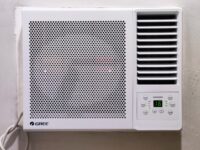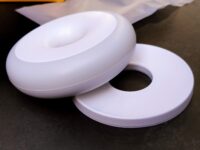When you live in a small and cluttered house, or you live in a big house with lots of stuff, labels should be your friends. When you finally decide to unclutter your home, and consequently your life in the house, you consider using labels.
Labels are essential for two main reasons. For starters, after you reorganize your house during festival cleaning, you might not remember where you keep your stuff. Labels will retrain your brain to remember the location of items. Secondly, a label makes it easy for you to locate a given item and later return it to its appropriate place. This saves you time and keeps your house looking neat.
The problem is, most people do not have label makers and laminating at home or from shops is also a tedious task. But, did you know you only need a few tools such as a printer, paper, scissors and ribbons to make labels? Read on to learn more.
Where and Why to Use Labels
Not all parts of your home need labels. Labels come in handy when you have two or more types of the same item. For instance, labels will make a great option if you have different kinds of toys, spices or sugar. Some common places to use labels include:
- Toy Bins: When you have lots of toys, you can affix a label and a picture on the bin to teach your children to tidy up. You may also have the name of a child on a toy bin if every child has their toys.
- Pantry Goods: When you empty dry foods including cereals, flours, grains, nuts, pasta, and lentils into plastic or glass containers, you’ll need to label them.
- Spices: If you use more than just salt when cooking, you might need to label spice jars to avoid confusion. Store-bought spice jars have labels and may not need labeling unless the labels come off, you need the jars to look uniform, you can only see the lid of the jar from the drawer or you buy spices in bulk and empty into small jars.
- Storage Boxes: This is where you store items you do not often use such as Christmas decorations. Label each box and list the items in each box on the label.
- Drawer Tops: For items kept in drawers, label the drawers to make it easier for you to locate items.
- Paper Files: In your home study, you might have lots of papers in your to-do box. Arranging the documents in files and labeling the files make it easier for you. You can have files labeled ‘to reply,’ to edit’ or any other task to be carried.
Commonly Used Labels
Chalkboard Paint
Chalkboard paint comes in handy when you need to create reusable labels for storage boxes, jars, bins, drawers, and other things. If the contents of a drawer or storage box changes, you just wipe off the paint and re-label. The paint is available as brush-on and spray-on and can be applied on many surfaces.
Printable Magnetic Labels
Magnetic labels are great because you can move them around. Prepare the labels on your computer, place the magnetic paper in your printer, print and cut out. These labels are great on tool chests and metal file drawers.
Bin Index
When you have large boxes on top of shelves, small labels may not be seen. To solve this problem, you can number the boxes (use large, legible numbers) and then use a binder to list the items in each box. The label on the box (box number) will correspond to a page on your binder.
Colored Vinyl Tapes
Color coding is great when you need to label tools such as wrenches or any other items that look almost the same. You can, for instance, use a red strip of tape on metric wrenches and a yellow strip of tape on SAEs.
Label Maker
A label maker is featured last because most people see it as a luxury. If you have a lot of items to organize, however, a label maker makes your work easier. If you can’t have it, try other methods as shown above.
Silhouette and Adhesive Vinyl Labels
This is a pricey option because a silhouette machine is needed. The advantage of this method is, you will end up with beautiful looking labels as you can use different label colors and designs.
Self-Adhesive Labels
Self-adhesive paper or vinyl labels give you an instant solution to organizing your house. These labels are available in stores and are easy to stick on surfaces. Some labels are reflective and hence useful in dark rooms such as the basement. You can choose from a variety of label colors and sizes.
Conclusion: You Can Use Labels Anywhere You Feel Necessary
Labels help you minimize confusion in your house, save time and reduce clutter. If your main electricity switchboard confuses you, stick labels on it. If you feel your clothes closet confuses you or your spouse, let labels come to the rescue.
Note: This is a guest post from blogger Annabelle Short of Craft with Annabelle.















